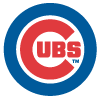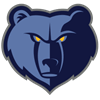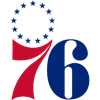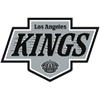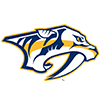For those who are unaware, RotoWire offers hard-hit data for minor leaguers on this page. It is one of the coolest tools we offer on the site. We get the data from Sports Info Solutions, and here is how SIS explains how the data is sourced:
"We chart all of our own batted-ball data in-house. Our video scouts collect timer data, trajectory, and location. Our research and development staff then uses that data to back out the batted ball velocity (hard/med/soft)."
Given that the data is tracked manually, it is not as accurate as the MLB data you see on Baseball Savant, but it's the best publicly available data for minor leaguers. This data itself is worth a subscription to RotoWire if you're a prospect maven. We don't have data on every single prospect, as there are some affiliates that SIS does not cover, but we have it for the majority of hitters playing in full-season leagues.
In this article, I want to highlight some hitters whose hard-hit data has informed where I have them ranked in the top 400, for better and for worse. The younger a player is, the more impressive a strong hard-hit rate is. We expect Quad-A players to have monster hard-hit rates, and conversely, it's not the end of the world if a player who is young for his level is not consistently hitting the ball hard.
DATA DARLINGS

I've gotten some questions recently about how concerned I am about
For those who are unaware, RotoWire offers hard-hit data for minor leaguers on this page. It is one of the coolest tools we offer on the site. We get the data from Sports Info Solutions, and here is how SIS explains how the data is sourced:
"We chart all of our own batted-ball data in-house. Our video scouts collect timer data, trajectory, and location. Our research and development staff then uses that data to back out the batted ball velocity (hard/med/soft)."
Given that the data is tracked manually, it is not as accurate as the MLB data you see on Baseball Savant, but it's the best publicly available data for minor leaguers. This data itself is worth a subscription to RotoWire if you're a prospect maven. We don't have data on every single prospect, as there are some affiliates that SIS does not cover, but we have it for the majority of hitters playing in full-season leagues.
In this article, I want to highlight some hitters whose hard-hit data has informed where I have them ranked in the top 400, for better and for worse. The younger a player is, the more impressive a strong hard-hit rate is. We expect Quad-A players to have monster hard-hit rates, and conversely, it's not the end of the world if a player who is young for his level is not consistently hitting the ball hard.
DATA DARLINGS

I've gotten some questions recently about how concerned I am about Davis's 30.3 K% at Double-A. I'd be fairly concerned if he was struggling to produce or if he wasn't taking his walks or if he was old for the level. However, he has been 47 percent better than league average while being one of the youngest hitters at Double-A and walking at an 11.9% clip. This is the first time in his career that he has ever struggled with strikeouts, and it's not that surprising, given the nature of his game (big-time power) the talent gap between High-A and Double-A and his age. His hard-hit rate is also excellent, and I think you'll see his K% continue to creep down the longer he stays at Double-A.

Greene is even younger than Davis, and unlike Davis, Greene skipped High-A completely. The reason I prefer Davis very slightly for dynasty leagues is because I believe Davis has a higher ceiling in power and in speed. One big pet peeve of mine is people referencing minor-league stolen-base totals as if they are always going to translate at the big-league level. I care about how many bases a guy steals in the minors, but I care more about how fast the player is, within reason. You won't find a single scouting report that says Greene is faster than Davis, and I weigh that more than which player has stolen more bases in a given minor-league season. That said, what Greene is doing at Double-A is so impressive, given his age and experience, and I don't think enough people are talking about it. There would have been no shame in Greene simply being a league-average hitter this year, but instead, he has consistently been one of the top hitters at the level.

I did a mini update to the top 100 or so prospects this past Friday (I didn't go much deeper than that, but I'll have a massive, full update in about 10 days), and Volpe's ascension into the top 15 was what generated the most buzz. I very rarely look at other rankings, especially top 100s (I do look at team top-30s occasionally to make sure I'm not sleeping on any of the super deep names), but apparently this is an outlier rank. I just don't really see what the case against Volpe is. He has pedigree, he has a pristine batted-ball profile, sending lasers to all fields, and his approach has been phenomenal. The big thing that pushes him over the top though is that his hard-hit rate, relative to his age (20) and stature (5-foot-11), is unbelievable. Just saying, "I don't buy it" because he wasn't highly ranked entering the year seems like a cop out. It's much more likely that we just didn't have a good gauge of his current talent entering the year than that he is somehow having a flukey season, and his hard-hit rate is the No. 1 reason for that.

Lowe is having the best season of his career, and while it has been frustrating that he hasn't gotten the call, I think we should feel pretty confident in what he is doing. The strikeouts give me pause in projecting a good batting average, especially early on, but as I said in his preseason outlook, he has the power and speed to go 20/20 even if he sits against most lefties.

Pratto is one of the best stories in the minors this year, and his massive bounce-back campaign is strongly supported by his hard-hit rate. The strikeouts are the one thing preventing him from being a top-20 prospect, but his power, patience (16.0 BB%) and defense should allow for him to have a long career as an everyday first baseman who is a top-10 fantasy option at the position during his peak years.

Gonzales is old for his level, but he has been very productive despite missing time with a broken pinky. There were some who questioned his production at New Mexico State due to the hitter-friendly conditions he played in, but his bat speed is hyperbolic and he dominated with a wood bat in the Cape, so I thought he would exceed expectations as a power hitter. So far, so good in that department.

It's really unheard of for a 19-year-old catching prospect to be doing this much damage at Low-A and High-A. I don't love how Alvarez's body is going to age, but there's no denying that he is a hitting savant. It will be interesting to see how quickly the Mets push him up the ladder from here, as he still draws skeptical reviews for his pitch framing.

Not only did the Dodgers succeed at teaching Ruiz how to launch the ball with regularity, but he has been hitting the piss out of it, which was not always the case. What Ruiz has always done is make contact at an excellent clip. It's a bummer that the Nationals are keeping him at Triple-A for now, but hopefully he is given a chance to win the starting job next year in spring training.

I probably should have given Vientos more of the benefit of the doubt prior to this season than I did. His approach at Low-A in 2019 scared me a little, despite the fact that he was just 19. He has always projected to have plus power, but Vientos is definitely a guy who got better during the pandemic, allowing him to skip High-A and break out in a major way this season.

When the Pirates acquired Peguero from Arizona in the January 2020 Starling Marte trade, scouts I talked to lauded the move for Pittsburgh's new regime, and ever since that trade, Ben Cherington and company have impressed me at almost every turn. The team's shortstop of the future, Peguero has logged a very impressive hard-hit rate, given that he is one of the youngest players at High-A. He also happens to be a plus runner.

While Wells is old for his level, he was one of the youngest college players in last year's draft class and is working on his catching defense, so it's not that odd that he's still at Low-A. He has been as good as I anticipated offensively, thanks to a patient approach and an ability to do damage when he connects.

What the hell does Foscue need to do to get a promotion to Double-A? He's been 95% better than league average and his pull-heavy approach has translated thus far against pro pitching. We will have to monitor the strikeouts, but it's looking like the Rangers have rebounded in recent years after struggling to get much out of the draft late last decade. I might be too low on Foscue, but given that he was an SEC guy and is already 22 and a half, I'd like to see him perform at Double-A before fully buying in.

Baty has done most of his damage this year at High-A, but given that he won't turn 22 until the offseason and has held his own after a promotion to Double-A, his stock is definitely on the rise. He needs to cut his groundball rate to maximize his monster raw power.

Melendez ranks second in the minors with 28 home runs, which is all the more impressive when considering that he is a 22-year-old catcher at Double-A. His 21.9 K% is even more impressive than his hard-hit rate, as he has always had huge raw power but his 39.4 K% at High-A in 2019 rightfully scared a lot of dynasty league managers away.

Wilson's surface stats since his promotion to Double-A don't jump off the page, but as he pointed out in a recent interview with David Laurila of FanGraphs, he's been hitting the ball hard and has been a bit unlucky. His 34.1 K% is concerning, but I think he's a strong buy low in deeper leagues, as the Giants have shown an ability to get the most out of their players, and Wilson's hit tool was seen as a strength coming into the year.

Pereira has already climbed from the Florida Complex League to Low-A and then to High-A, where he has finally faced some resistance. He was a big-ticket J-2 signee in 2017 and is finally making good on that pedigree. Pereira is far from a perfect prospect, but if he can get his strikeout rate under control over the final month, he could open next season as a fringe top-100 prospect.

From an age standpoint, Burger looks the part of a Quad-A hitter, but when we factor in that he didn't play at all from 2018 through 2020 due to multiple Achilles surgeries, I think we can forgive his birth certificate for now. He is one of the best stories in all of baseball, and I'll be interested in buying Burger in 2022 redraft leagues if it looks like he might have a place to play every day. For what it's worth, Gavin Sheets' hard-hit rate is almost 10 percentage points lower.
TO BE EXPECTED/ROOM TO IMPROVE

Part of me wanted to have Abrams as high as No. 3 on my recent update to the top 100. I could still regret not keeping him up next to Bobby Witt. After all, I legitimately think he could be Trea Turner in fantasy — that's a really high ceiling. However, we just don't know how much he's going to impact the ball at the highest level.

This is one of the more confusing hard-hit rates in the minors. Again, these aren't going to be 100% accurate, but I believe they're accurate enough that a hard-hit rate this low tells a story. Casas is one of the youngest hitters at Double-A, and he's kept his strikeouts in check while being fairly productive, but his six home runs in 46 games prior to the Olympics leave a lot to be desired.

This one is just as confusing as Casas. Like Casas, Groshans is one of the youngest hitters at Double-A, and he has displayed a very strong approach. I've seen Groshans hit absolute missiles, so I know the power is in there, but perhaps he's sacrificing power right now in favor of a better approach, knowing that he'll eventually grow into more game power.

Unfortunately, a shoulder injury put an end to Freeman's season. It's unclear if that was something he had been playing through, possibly affecting his hard-hit rate, but his elite hit tool was once again on display. I'm still confident he will grow into enough power to not be a sinkhole there, but that aspect of his game is still mostly projection.

This is one of the other bigger surprises. Walker has mammoth raw power and was given aggressive assignments and promotions this season, but he will need to lower his groundball rate and square up the ball more consistently to hit his ceiling as a four-category stud who hits in the middle of a big-league lineup.

There seems to be a misconception by some that Harris is going to be a big power hitter. If we're ranking hit, speed and power, power is his worst tool right now and that will probably always be the case. My friend Matt Eddy from Baseball America compared him to Starling Marte in a conversation earlier this season, and if Harris ever develops Marte's peak game power, I'd consider that a win. I don't think he has that type of stolen-base upside, but I buy the hit tool comp.

It's fair to compare Mitchell to guys like Nick Gonzales and Justin Foscue from the same draft class, and while Mitchell is the first of those three to reach Double-A, he has also impacted the baseball with the least amount of regularity. The biggest concern with Mitchell coming out of UCLA was that his approach was more about dumping the ball into the opposite field rather than using his plus raw power to drive the ball consistently. That concern is still there.

There is absolutely nothing wrong with Peraza's hard-hit rate being this low, but I think it's instructive when comparing him to org. mate Anthony Volpe. Volpe's hard-hit rate is almost double Peraza's, which is why I think Volpe can be a No. 2 hitter in the majors while Peraza could be a productive fantasy option who hits in the bottom third of a good big-league lineup.

Rocchio is very similar to org. mate Tyler Freeman. The two big distinctions are that Rocchio projects as a shortstop while Freeman projects as a second baseman, and Freeman has an elite hit tool while Rocchio's is merely very good.

Waters is performing better than Cristian Pache at Triple-A, but that's damning with faint praise. The strikeouts are still an issue, and while Waters is capable of excellent maximum exit velocities, consistency is a weakness.

There is no shame in Tovar having this hard-hit rate, and I think you could actually argue that given his age and slight frame, this is about as good of a rate as we could hope for. It's impressive that he hit 11 home runs at Low-A prior to getting promoted, and I think we can project 50-grade power at peak.

I knew Edwards was performing well at the plate, but I was surprised his hard-hit rate was even this high, considering he logged a brutal 12.5 Hard% in 2019. He is slash and dash all the way, but that could still translate to Nick Madrigal with more speed if he got traded into an organization where he'd have a chance to play every day.

Marcano is many things, but he is unlikely to hit for much power in the majors. I'm willing to project power gains with some players depending on their physical profile and batted-ball tendencies, but Marcano is very skinny and just doesn't even try to hit for power unless the pitcher throws him a meatball.

I like Lopez a decent amount for deep dynasty leagues, as I think he could be a David Fletcher/Luis Arraez type who can play multiple positions while bolstering your fantasy batting average, but I'm not projecting significant power gains.

Hamilton is like Xavier Edwards except a couple years older and not as good. He is one of the fastest players in the minors, so if he ever ends up with semi-regular playing time, he could be an impactful fantasy option for the stolen bases, but don't bank on much in the way of power gains.
TIME TO PANIC

I know I'm less patient than many prospect analysts, but what's the statistical case for being patient with Bleday as a top-100 prospect? If I told you about a 23-year-old at Double-A who had a career .215/.310/.357 slash line with one steal in 121 games in the minors, you wouldn't roster that player. His hard-hit rate doesn't help his cause. You probably wouldn't get much in a trade, and it would take guts to straight up cut Bleday, but pedigree is the main thing he's got going for him right now.

It's no longer a contrarian stance to say you dislike Pache as a fantasy prospect (if it ever was), but even his staunchest supporters have to be questioning that stance at this point. Yes, he's still just 22, and his glove should buy him plenty of opportunities, but the best-case scenario seems like Kevin Kiermaier, and there's a chance he's Billy Hamilton with 20% of the stolen bases.

On the one hand, Burleson has climbed from High-A to Triple-A in his first pro season, which is a great indicator. However, he is one of the worst athletes on my top 400 and he doesn't really have anywhere to play defensively. So if we factor all that in, I think it's fair to be concerned about a future designated hitter having a below-average hard-hit rate at age-appropriate levels.

I'm not saying Westburg isn't good or won't be good. In fact, he has been much better to date than I would have expected before the season. That said, he was under-assigned to start the year — there's no reason an SEC hitter with his pedigree should have opened at Low-A, and he has struck out a decent amount to go with this underwhelming hard-hit rate. He is good enough at enough things on a baseball diamond to reach the majors, but this might be the best time to trade him in dynasty leagues.

Bracho was given a pretty aggressive assignment, but that still doesn't really excuse how bad he's been at the plate, as it's his bat that needs to carry him to the majors. He is overly aggressive and doesn't make enough quality contact to get away with that approach, at least not right now.

I was pretty bullish on Isbel this spring, but he'll be heading into his age-25 season next year with what looks more like a fourth outfielder profile than that of an everyday player. The speed is nice, but I don't trust him to hit enough for his bat to consistently be in the lineup.

I used to think Perdomo could be a Didi Gregorius type of power hitter, but now I'm unsure if he'll even have a lengthy big-league career. There's such a thing as being too patient at the plate. If you're going to go the Myles Straw route of defense and OBP, you can't be striking out 25.2 percent of the time at Double-A.

I was really pulling for Oliva, but this season has been an unmitigated disaster. His age and lack of high-end center field defense make him a potential DFA candidate this offseason.

With Hoese, it was always going to be about the bat, and it seems like that eye-popping performance as a junior at Tulane was fool's gold. Even the Dodgers are wrong sometimes.

If you're a 22-year-old left field prospect at High-A, you better rake, and Cabrera has not done so. His swing is pretty, but there doesn't appear to be the necessary impact potential here.














